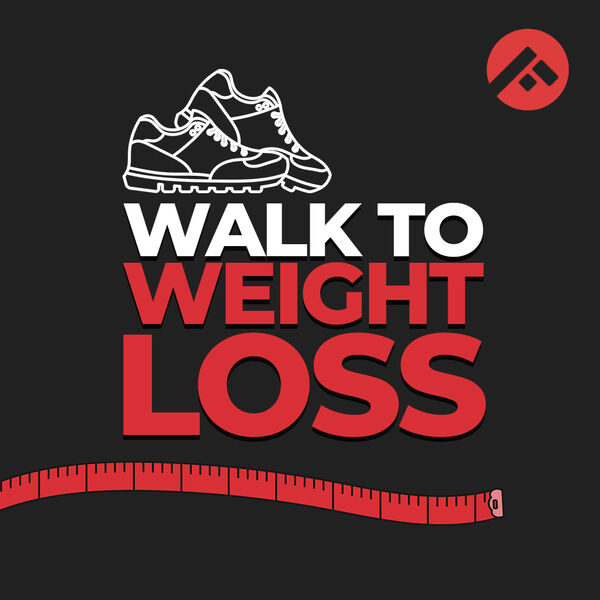
What Are the Benefits of Walking?

Walking is the most commonly reported exercise among adults worldwide. A study with 14,227 Indian adults showed that about 54% of them were inactive. They mainly walked as a means of navigating their jobs within inner-city areas, which were generally busier compared to rural areas. Moreover, across different Indian cities, fewer than 10% engaged in recreational physical activity, like walking, for fun. Here, we take you through the physical and physiological benefits of walking for adults.
The science of walking: An overview
For centuries, walking has been considered a beneficial activity for various social, physical, and psychological reasons. Walking can lower anxiety and stress levels and play a role in improving mental health. Walking in groups can enhance community connectedness, release the feel-good hormones, and boost self-confidence.
General benefits of walking daily
Walking is considered a good mode of exercise due to many reasons. A few common plus points of walking include:
1. It is an ideal long-term exercise
Walking is a natural bodily movement performed every day by individuals of various physical capacities. Unlike running, walking is a low-intensity physical activity. So, you feel a lot more comfortable while doing this exercise.
Though the total energy expenditure of a brisk walk is often a lot less compared to running, the advantage of walking for people with low baselines of cardiovascular fitness is that it can be sustained over a longer period.
2. It is a cost-effective workout
As walking is a low-impact exercise, you may perform it with little or no external equipment. All you need is a good pair of walking shoes and the appropriate apparel. So, there are a lot of less-perceived barriers to walking compared to actively going to the gym or buying expensive exercise equipment.
3. It offers flexibility
When you are walking, you have more options. For instance, you may opt for a suitable walking pace and the preferred type of walking terrain like hill, sand, sidewalk, or grass. Additionally, you are free to decide on the duration of your walk and how frequently you will be doing this activity in a week.
Going to the gym and performing resistance-based exercises may yield more value in terms of building strength and toning muscle. However, often the activities performed in the gym are limited by the weights (load) being lifted, your experience, and the types of equipment available. So, considering all these parameters, walking holds a significant benefit.
4. It brings you closer to nature
Walking outdoors can bring you closer to the environment. The perception is that walking outdoors is healthier, and being surrounded by open green and/or blue spaces calms the mind and body.
Also Watch: Does Walking Reduce Your Stress?
What are the physical and physiological benefits of regular walking?
1. Lowers the risk of cardiovascular diseases
Walking more per week considerably reduces the risk factors associated with cardiovascular diseases (CVDs). It contributes to the reductions in body mass, body mass index (BMI), body fat, systolic and diastolic blood pressure, and fasting glucose. Also, it aids in increasing your VO2 max. However, there is still limited understanding of what the phrase “more per week” actually refers to. What is the desired volume or frequency of walking? How much should we do? These questions do not have a clear answer despite the growing research.
What the research currently indicates is that rather than more is better, realistically anything is better than nothing. To illustrate this, a recent review by Oja et al. showed that walking within the range of approximately 100 Metabolic Equivalent (MET) to 1,300 MET minutes per week can decrease the risk factors associated with CVDs. 1 MET is defined as the amount of oxygen consumed while sitting at rest and is equal to 3.5ml O2 per kg body weight per minute. Moderate-intensity activities can result in 3 MET-5.9 MET of energy expenditure.
Therefore, if you are exercising at 3 MET, you are expending thrice the amount of energy than you will while at rest. For instance, if you perform brisk walking, which is a moderate-intensity activity for 30 minutes a day, five days a week, and at a rate of 3 MET, you will be expending 450 MET per week
2. Helps to prevent Type 2 diabetes
Type 2 diabetes is a common lifestyle condition with the number of diabetics growing worldwide. Physical inactivity and a sedentary lifestyle may play a role in increasing the risk of developing this medical condition. An exercise like brisk walking can be an essential component of prevention and help manage this condition.
Studies suggest that brisk walking, which is a moderate-intensity workout, can help in reducing the risk of type 2 diabetes. Furthermore, it is recommended to do such a regular moderate-intensity workout at least five days a week for a duration of minimum 30 minutes per day to lower your probability of getting type 2 diabetes
3. Lowers the risk of mortality
A surprising health benefit of walking is the relationship between daily step counts and all-cause mortality, which is the death rate from all causes of death for a population in a given period. There appears to be a dose-response association between the number of steps taken per day and the risk of all-cause mortality. That is, the more steps taken per day, the lower the risk for all-cause mortality, with half the risk expected for meeting a daily step count of 10,000 compared to 2,700. Indeed, taking 14,000 or even 16,000 steps per day was associated with a 62% and 66% lower mortality risk, respectively.
4. Helps to preserve bone health
In terms of bone health, and more particularly, preserving bone mineral density, it appears that walking alone offers marginal osteogenic benefits. As walking is relatively low-impact, the general idea is that it is not enough to induce bone adaptations. However, regular walking, when performed in conjunction with running and resistance-based exercises, may incur some positive benefits for bone health among elderly people. From a cardiovascular standpoint, walking pace may be inversely associated with the risk of mortality and developing CVDs.
So, faster walking paces, which are more than 4.6km/hour, may significantly lower the risk of developing CVDs and early death. However, walking speeds may be directly related to physical function, weight (body mass), and age. So, it is advisable to gradually increase your walking speed over time.
Also Watch: How to Walk Faster?
Conclusion
Overall, there are multiple physical and physiological benefits of walking regularly. So, make it a point to walk every day. Lastly, whenever possible, walk at higher speeds to derive optimum advantages from this wonderful exercise.
References:
1. Murtagh EM, Mair JL, Aguiar E, et al. Outdoor Walking Speeds of Apparently Healthy Adults: A Systematic Review and Meta-analysis. Sports Med 2021; 51:125–41.
2. Anjana RM, Pradeepa R, Das AK, et al. Physical activity and inactivity patterns in India–results from the ICMR-INDIAB study (Phase-1)[ICMR-INDIAB-5]. Int J Behav Nutr Physical Act 2014; 11.
3. Ramachandran M, D’Souza SA. A Cross-Sectional Survey on Older Adults’ Community Mobility in an Indian Metropolis. J Cross Cult Gerontol 2016; 31:19-33.
4. Manson JE, Greenland P, LaCroix AZ, et al. Walking compared with vigorous exercise for the prevention of cardiovascular events in women. N Engl J Med 2002;347:716-25.
5. Lee IM. Dose-Response Relation Between Physical Activity and Fitness: Even a Little Is Good; More Is Better. JAMA 2007;297: 2137–9.
6. Kelly P, Williamson C, Niven AG, et al. Br J Sports Med 2018; 52: 800-06.
7. Oja P, Kelly P, Murtagh EM, et al. Effects of frequency, intensity, duration and volume of walking interventions on CVD risk factors: a systematic review and meta-regression analysis of randomised controlled trials among inactive healthy adults. Br J Sports Med 2018; 52: 769-75.
8. Jayedi A, Gohari A, Shab-Bidar S. Daily Step Count and All-Cause Mortality: A Dose–Response Meta-analysis of Prospective Cohort Studies. Sports Med 2021.
9. Bolam KA, van Uffelen JG, Taaffe DR. The effect of physical exercise on bone density in middle-aged and older men: a systematic review. Osteoporosis Int 2013; 24: 2749-62.
10. Imran TF, Orkaby A, Chen J., et al. Walking pace is inversely associated with risk of death and cardiovascular disease: The Physicians’ Health Study. Atherosclerosis 2019: 289: 51-56.
11. Colberg SR, Sigal RJ, Fernhall B, et al. Exercise and type 2 diabetes: the American College of Sports Medicine and the American Diabetes Association: joint position statement executive summary. Diabetes Care 2010; 33: 2692-6.













